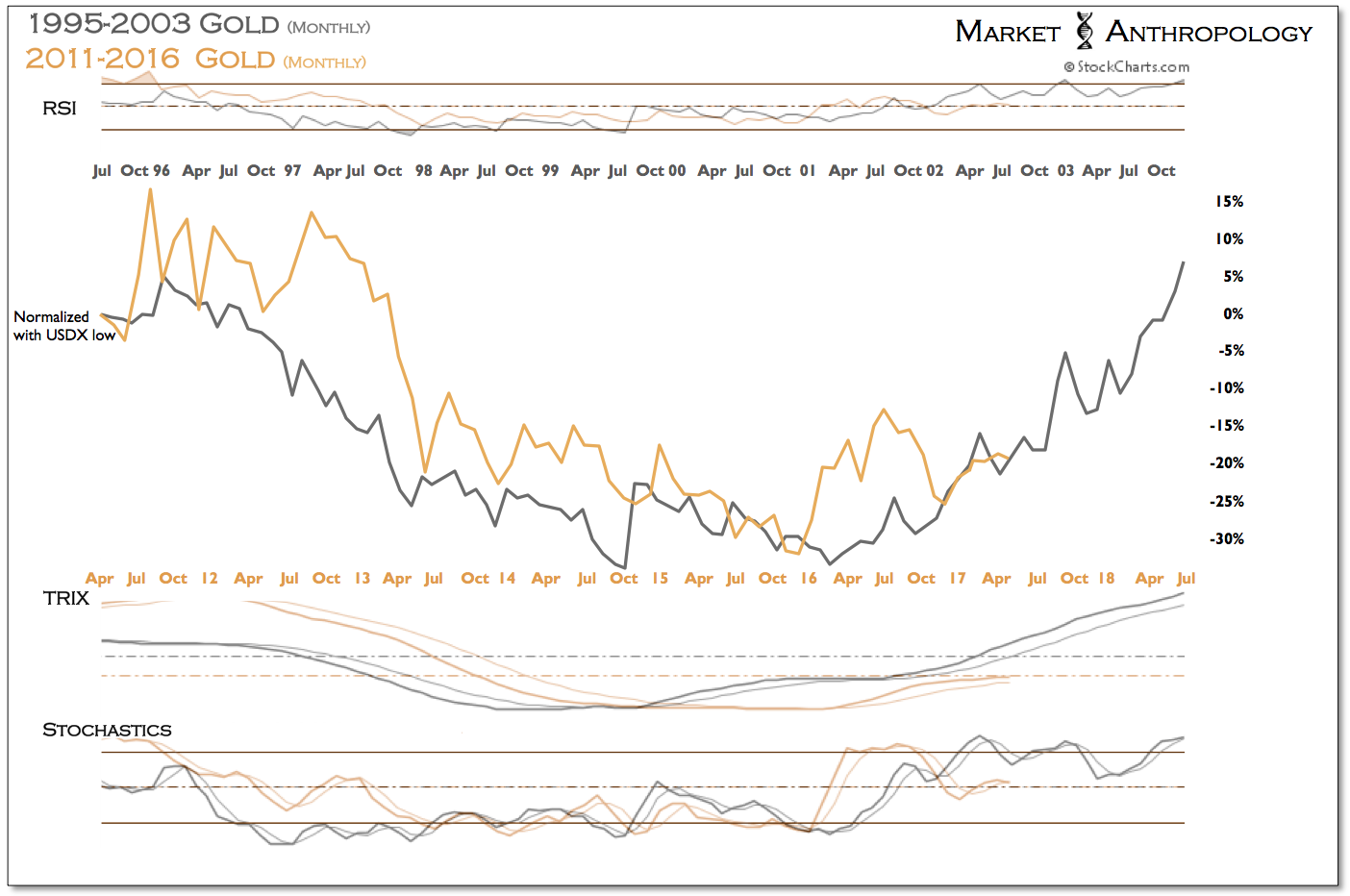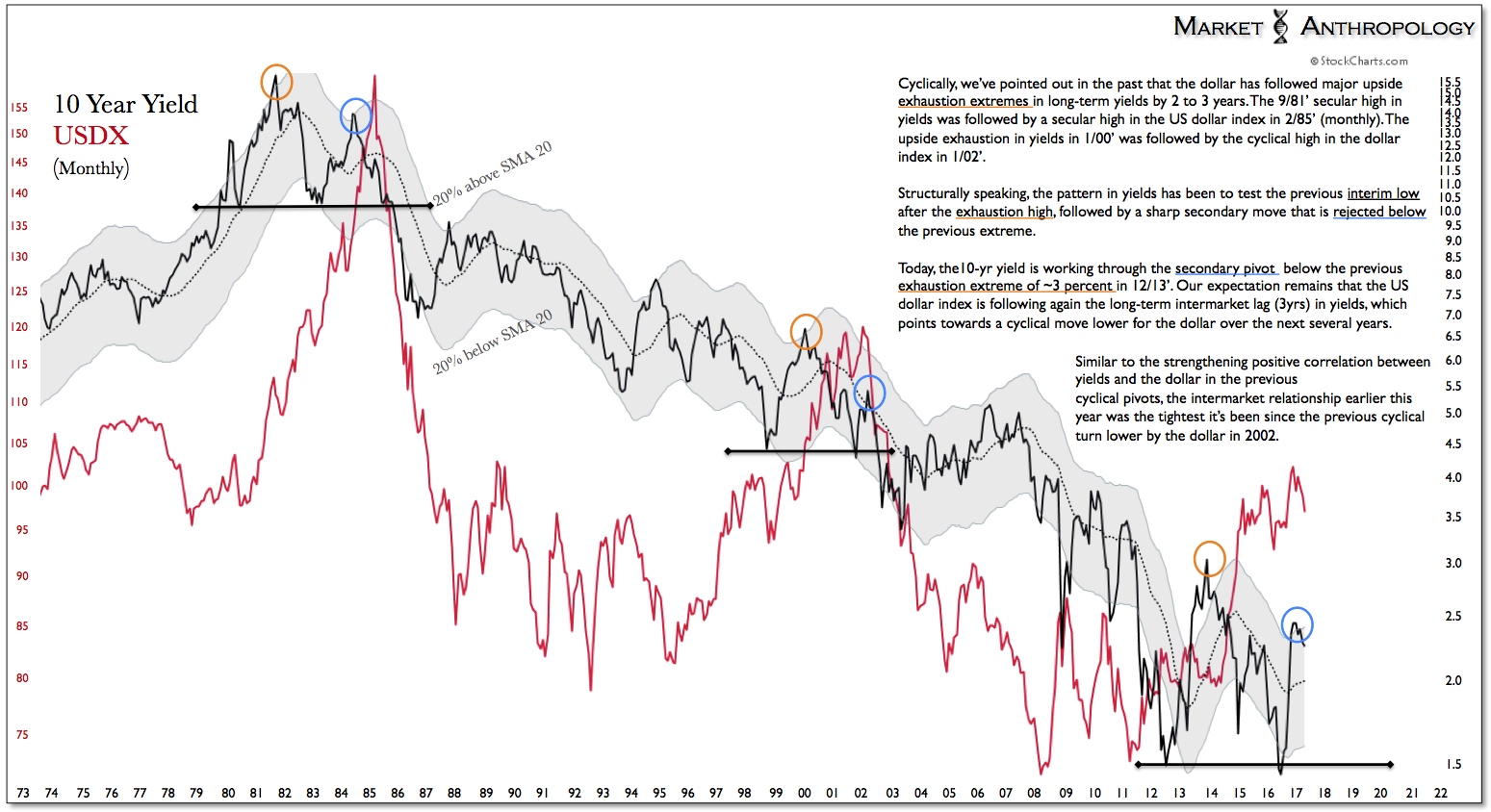Despite holding both the experience and capacity to understand the complexities of the forest, in a post global financial crisis world, when markets head south and loose traction the Fed’s focus narrows to effectively the trees and any brush directly in view. In this respect, they have feared the forest for the trees – for quite some time.
This mentality has supported the longevity of the current economic expansion (3rd longest since 1850), as the Fed has taken a very active and accommodative approach since the financial crisis exhausted with enabling a benevolent market environment for businesses to rebuild and expand within. Consequently, they have more frequently than not erred on the side of extreme caution – predominantly from a reaction perspective to possible outbreaks of brushfire in the markets, while pushing back more hawkish expectations that to-date have avoided “pricking” the business cycle (see perhaps June).
Greatly contributing to the Fed’s fear of destabilizing the economy has been the relative tepid pace of the expansion, which historically would have seen real GDP growth north of 3 percent – a condition completely absent from the data this cycle, despite the unemployment rate in April matching the lows from the previous expansion in the mid-2000s. And although these conditions are likely more normal than not (i.e. within the context of our collective disposition within the trough of the long-term yield and growth super cycle), the sensitivity displayed on the part of the Fed over the past several years may see the current economic expansion die primarily from old age and exhaustion – rather than the characteristic and eventually toxic exuberance more typical of the two previous cycles.
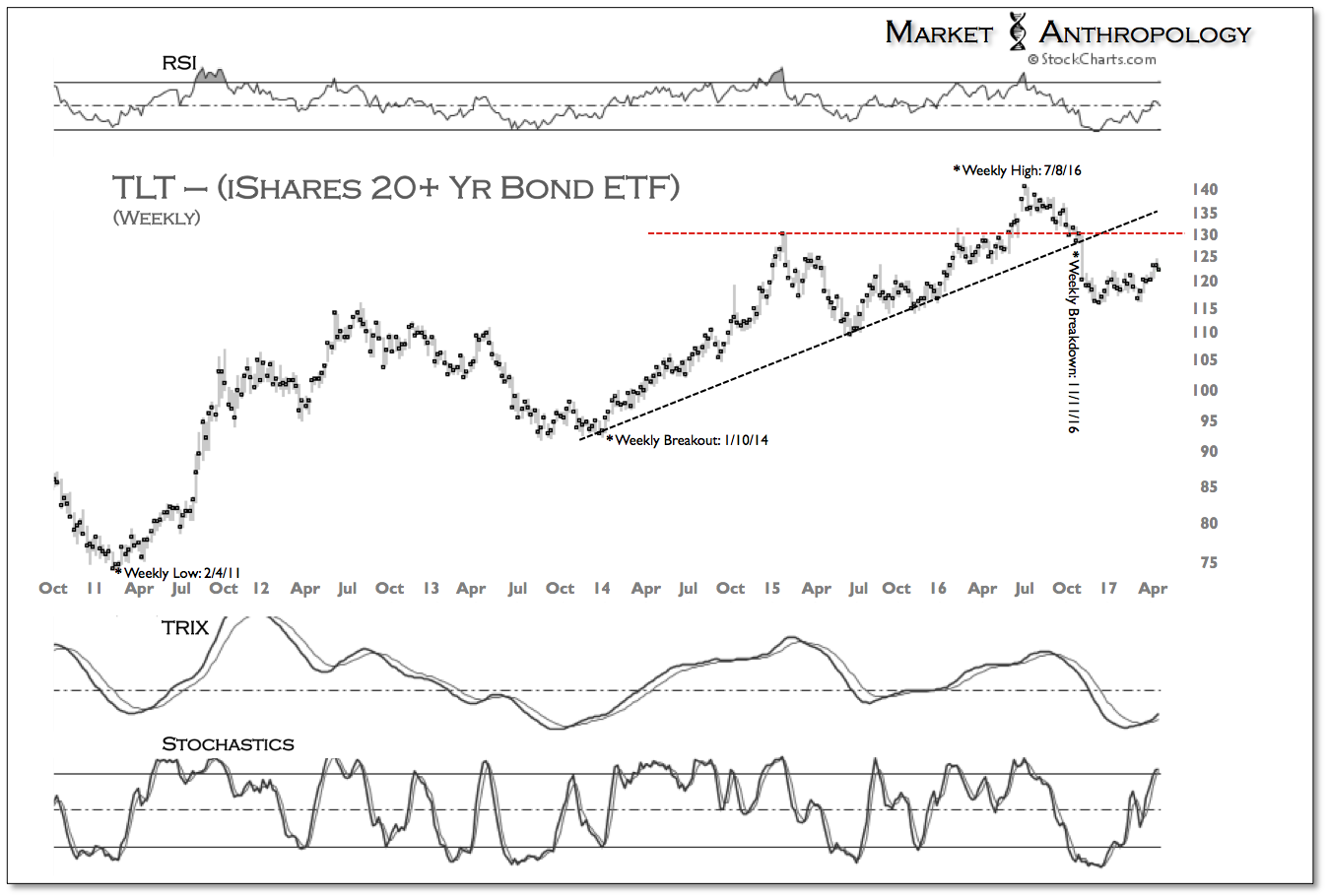
We’ve noted over the past year that Treasuries (iShares 20+ Year Treasury Bond (NASDAQ:TLT)) were the first market to peak in July and break down in November, which from a leading intermarket perspective pointed towards a potential breakdown for the US dollar index this spring.
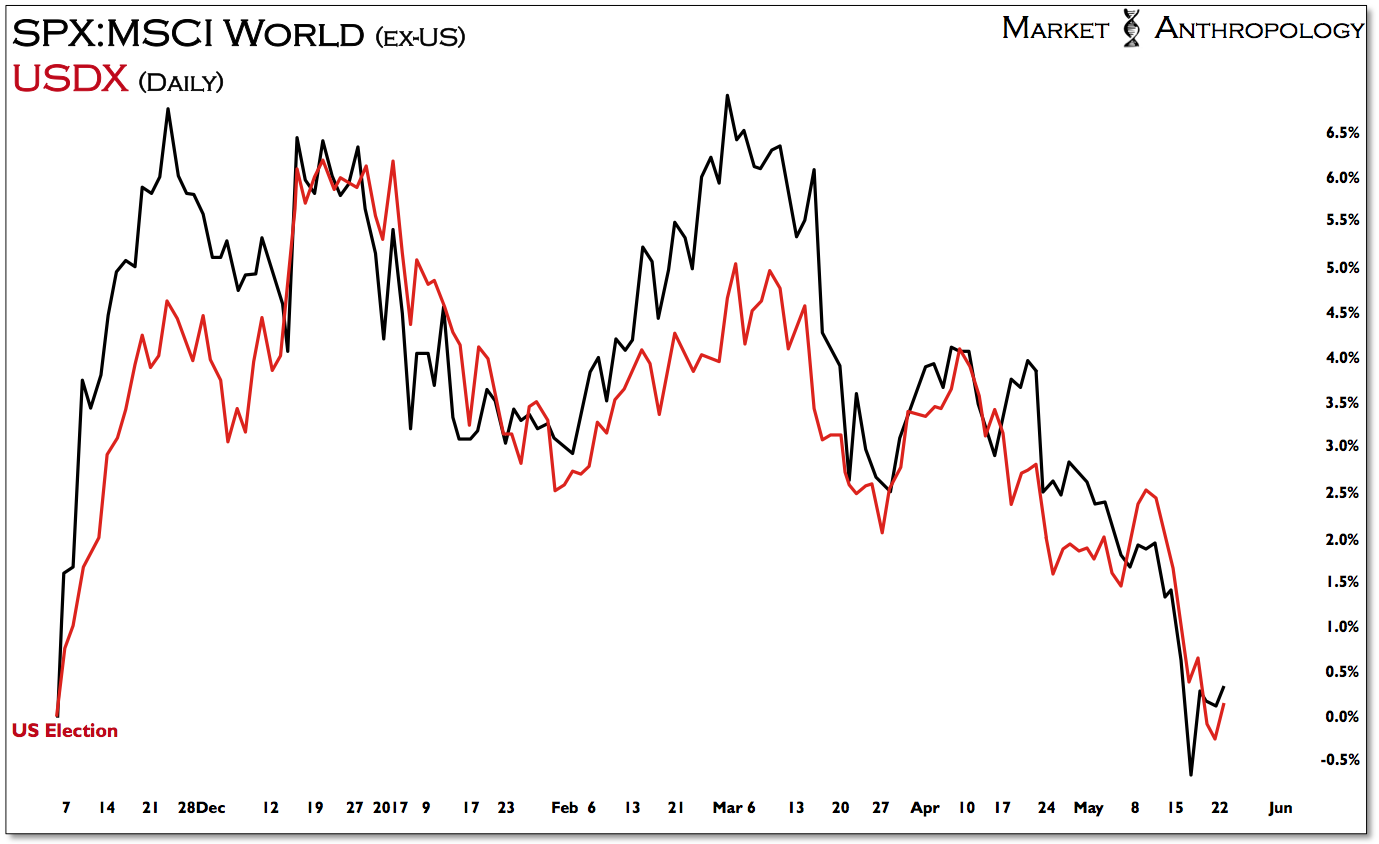
Over an intermediate-term timeframe, the dollar index has followed the structural pivots in long-term Treasuries by several weeks over the past several years, with the relative performance of US equities closely tracking the respective trend in the dollar. Right on schedule and true to form, the US dollar index broke down last month, similar to the throw-over top reversal in long-term Treasuries last year.
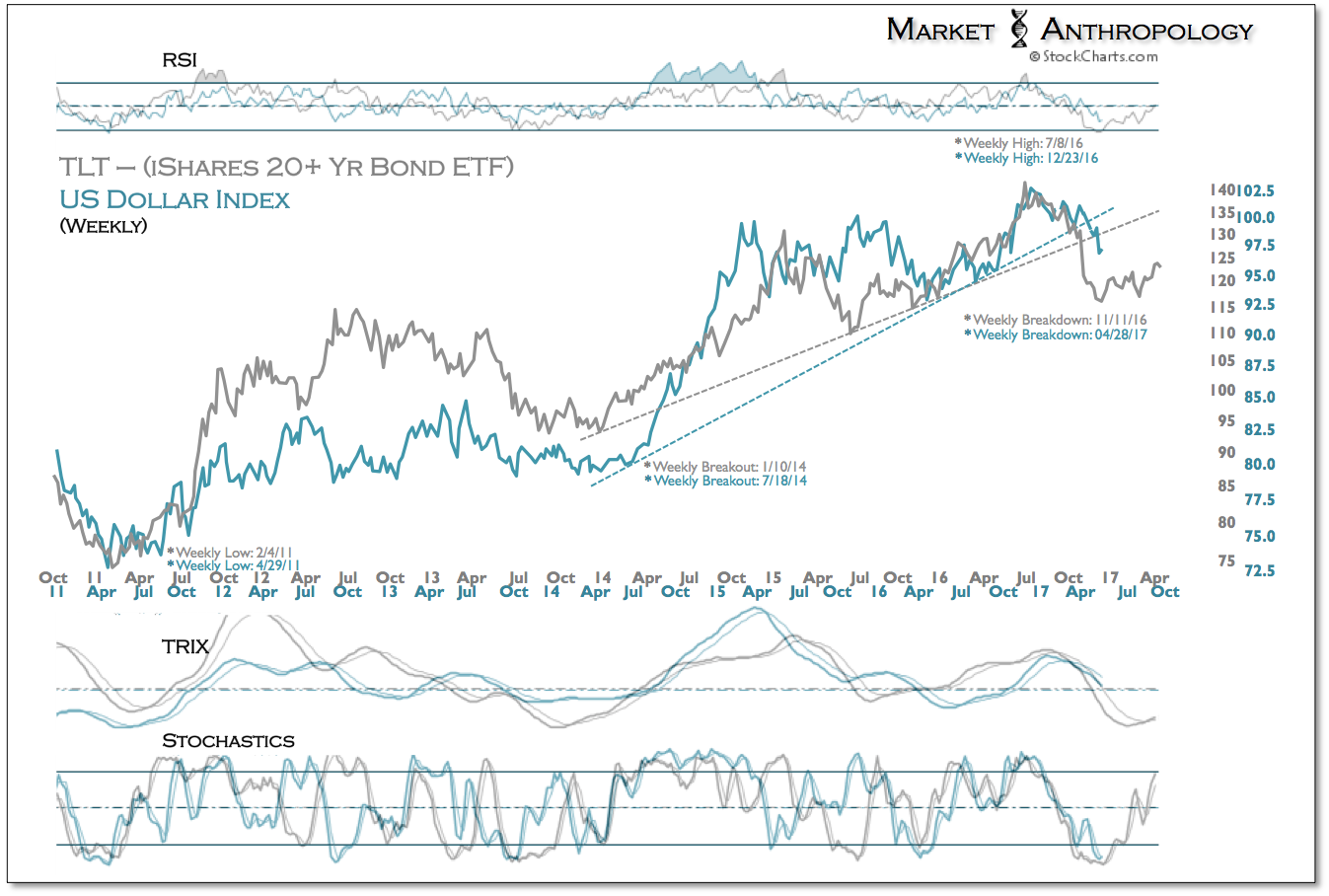
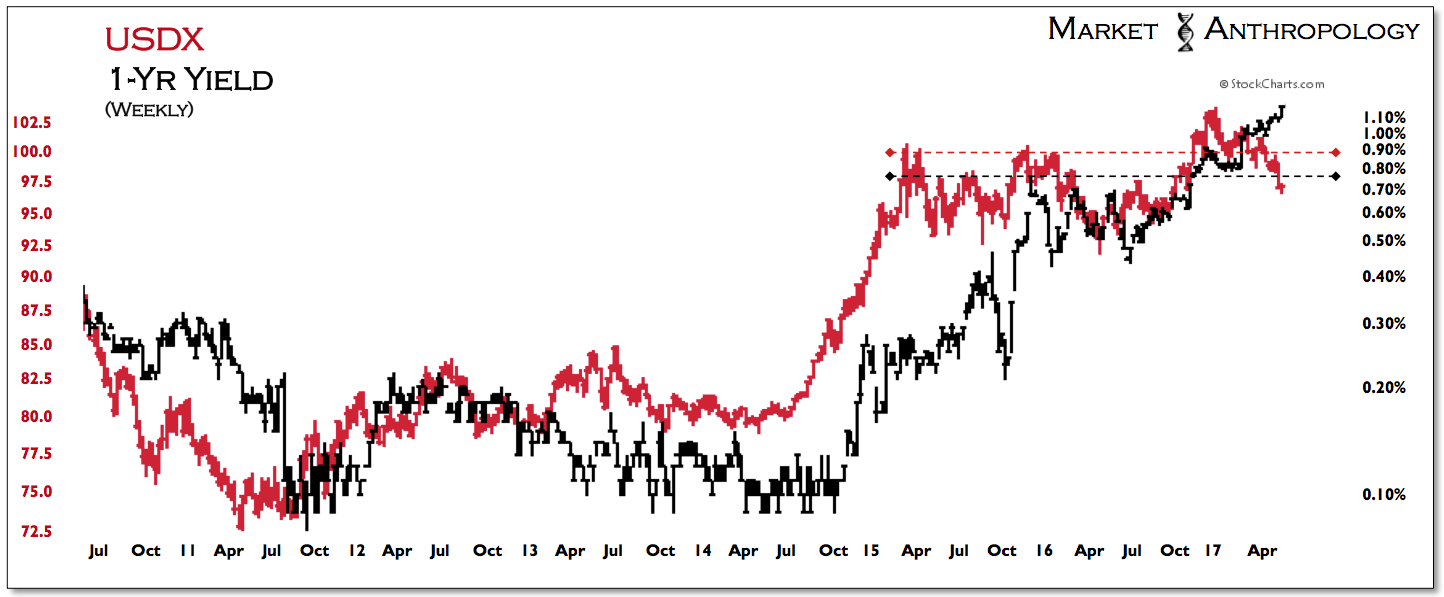
Should the dollar breakdown continue, the uptrend in short-term yields that began in November 2014 – subsequent to the dollar breakout in July and the end of the Fed's taper in October of that year – is likely near the top of the cycle. Moreover, despite the support extended by the current uptrend in the Fed funds rate, future rate hike expectations in June (78.5% CME FedWatch) or the growing pressure to further normalize the Fed's balance sheet, a leading intermarket relationship is firmly in retracement.
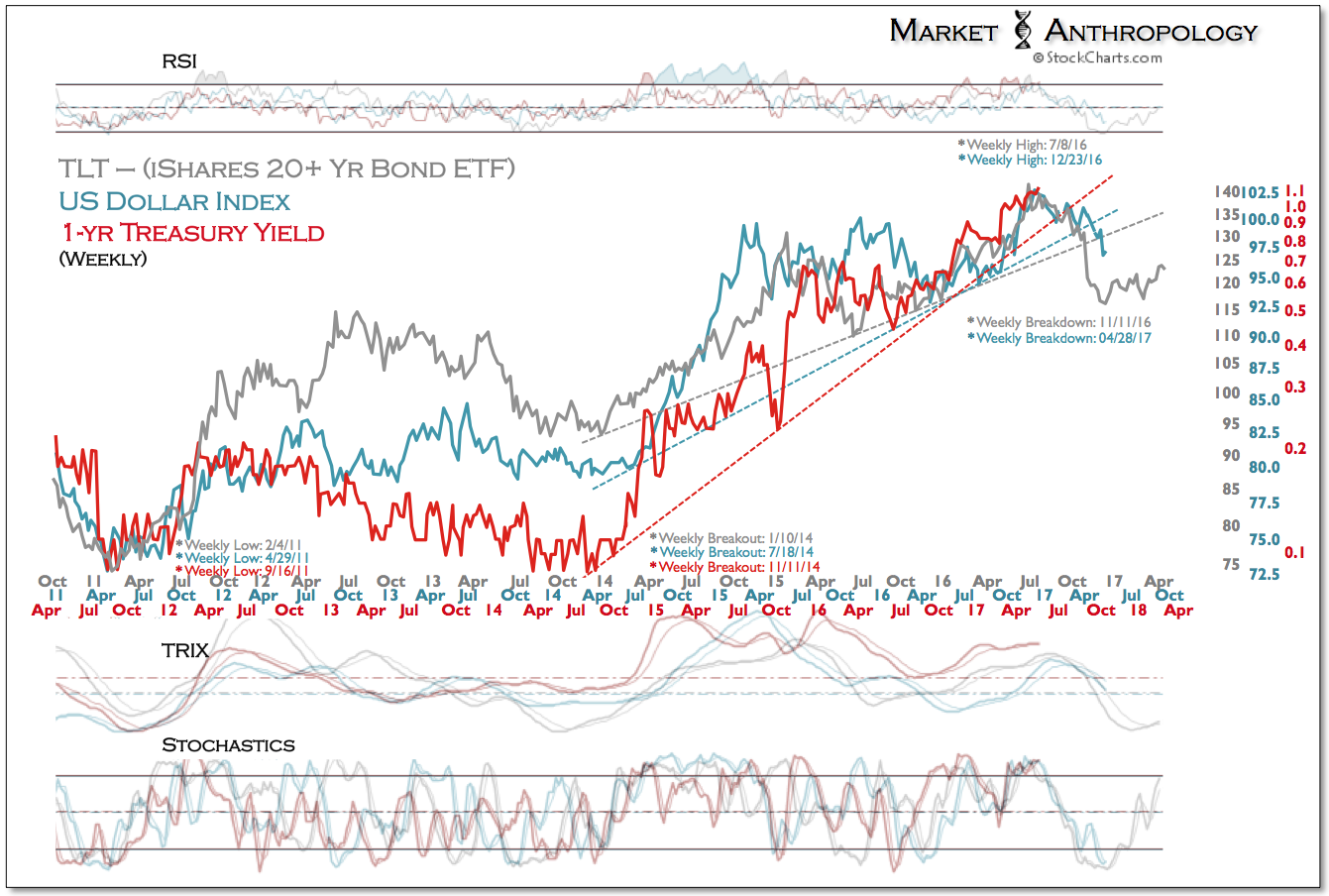
One could make the analogy that similar to how an elderly patient’s circulatory system weakens before exhaustion, markets have been going through a sequenced transition since last summer. As such, over the long-term we continue to favor counter-cyclical assets like gold that should outperform as the dollar and equities retreat from a cyclical high.

